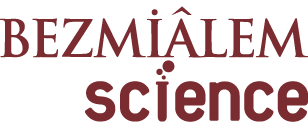ÖZET
Amaç:
Yağlı tohumlar ve üzümden elde edilen ürünlerin lipid profili üzerine olumlu etki gösterdiği epidemiyolojik ve klinik araştırmalarla kanıtlanmıştır. Bununla beraber kuru üzümün lipid profili üzerine etkisini araştıran çalışmalar sınırlıdır. Bu araştırmada hiperlipidemili obez kadınlarda fındık, kuru üzüm veya fındık ile birlikte kuru üzüm içeren kardiyoprotektif diyetlerin tüketilmesi ile kardiyoprotektif kontrol diyeti tüketilmesinin lipid profili ve antropometrik ölçümler açısından karşılaştırılması amaçlanmıştır.
Yöntemler:
Paralel kontrollü randomize klinik araştırmaya 37 hiperlipidemili obez kadın katılmıştır. Katılımcılar randomizasyonla dört gruba ayrılmıştır. Altı hafta boyunca kontrol grubu kardiyoprotektif diyet, diğer gruplardaki katılımcılar bulundukları gruba göre 50 g/gün fındık, 50 g/gün kuru üzüm ve 50 g/gün fındık+ kuru üzüm içeren kardiyoprotektif diyetleri tüketmişlerdir. Araştırmanın başında ve sonunda katılımcıların kan lipidleri, kan glikozu düzeyleri ve kan basıncı ölçümleri yapılmış, antropometrik ölçümleri alınmıştır.
Bulgular:
Gruplar arasında lipid profilleri, kan glikozu, kan basıncı ve antropometrik ölçümler bakımından anlamlı fark bulunmamıştır (tüm p>0,05). Başlangıç ölçümleri ile karşılaştırıldığında, araştırmanın sonunda tüm gruplarda toplam kolesterol, düşük yoğunluklu lipoprotein kolesterol ve beden kütle indeksi düzeyleri istatistiksel olarak anlamlı düzeyde azalmıştır (tüm p<0,05).
Sonuç:
Araştırmanın sonunda dört grubun lipid profilleri ve antropometrik ölçümlerinde meydana gelen olumlu değişiklikler nedeniyle hiperlipidemili bireylere uygun bir diyet programına ek olarak fındık, kuru üzüm ve fındıkla beraber kuru üzüm tüketiminin önerilebileceği sonucuna varılmıştır.



